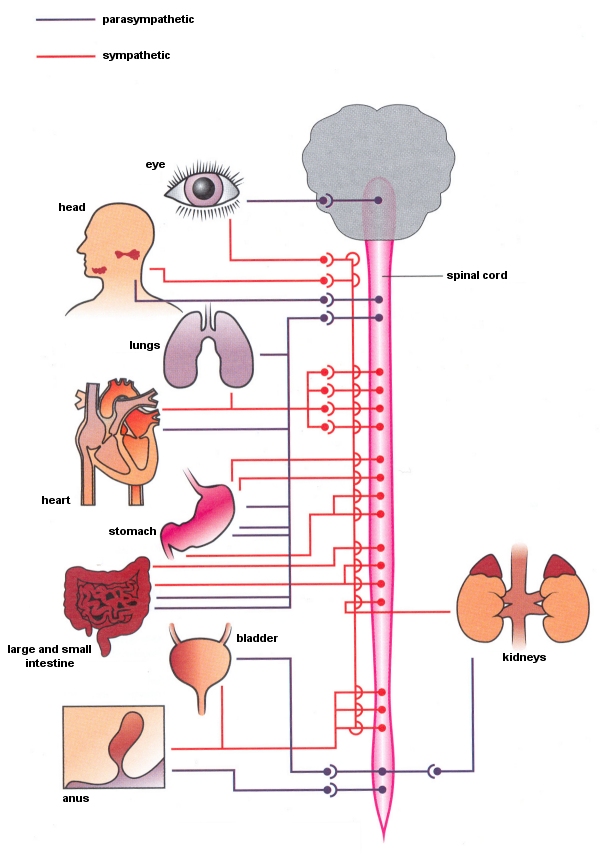The Autonomic Nervous System
The autonomic nervous system supplies nerves to all the internal organs of the body and to the blood vessels. It regulates events which are autonomic. It is controlled by the hypothalamus and its actions are thus not controlled by the brain or will, but are completely reflex and involuntary. As a consequence, we nor the brain knows when the actions will happen.
The autonomic nervous system is divided into two parts:
- Sympathetic
- Parasympathetic
Sympathetic
The sympathetic nervous system consists of ganglia - collections of nerve cells - which are situated in front of the vertebral column and travel the length of the body from the thoracic to the lumbar region. These nerve serve a number of purposes:
- stimulate the action of an organ, releasing noradrenaline preparing the body for "fight or flight".
- accelerate the action of the heart
- cause dilation of arteries
- cause dilation of blood vessels supplying skeletal muscles
- cause sustained contraction of the spleen, increasing the volume of blood circulating
- raise blood pressure by constricting small arterioles and arteries that supply the skin
- constrict blood vessels in secretory glands of the digestive system
Parasympathetic
The parasympathetic nervous system consists of the vagus, oculomotor, facial and glossopharyngeal nerves which branch of to all organs in the chest and abdomen. These nerves serve a number of purposes:
- slow down the action of an organ
- releases the neurotransmitter acetylcholine
- slows the action of the heart
- constricts the flow of blood to the heart

